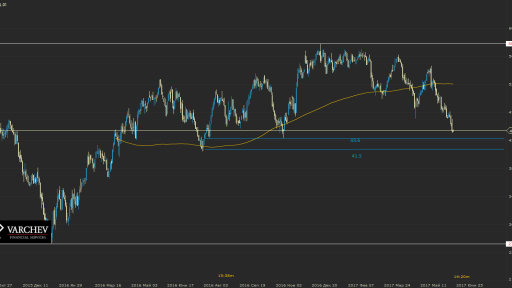- Home
- >
- Fundamental Analysis
- >
- Fundamental analysis of the perspective for oil prices.

Fundamental analysis of the perspective for oil prices.

Negative sentiment around oil continues after prices have fallen by more than 20 percent of the peak reached in the year, marking its worst performance in the first six months of 1997. By which he officially went to the sword market territory.
The continuing fall in prices seems to be due to the fact that the increase in production from the United States, Libya and Nigeria, as well as the stubbornly high world reserves, undermine the view that continued production cuts by OPEC and Russia will raise prices, Is the market does not believe it will be able to limit the high supply.
The increased production of Nigeria and Libya, the two OPEC members exempted from a reduction in production, are downplaying expectations of supply constraints.
Exports from the 14-member group reported higher growth in May due to rising output in Nigeria, Libya and Iraq, raising concern about OPEC's efforts to reduce global crude oil reserves. OPEC and other manufacturers have committed to keep production at 1.8 million barrels per day.
Oil production in Libya has grown by more than 50,000 barrels per day to 885,000 barrels. Meanwhile, exports from Nigeria will increase by 62,000 barrels per day in August.
Let's also look at the situation in the US.
The shale sand production index continues to grow, which means that US production is gaining more and more.
If supported, expected production growth from shale players will be at least half a million barrels a day more by the end of the year. Increase in shale oil output is observed when the oil price reaches over $55 a barrel. Some say break even in shale oil is at a price of $65. However, the yield is growing.
The latest data on Friday, 16th, showed an increase of 6 new oil platforms, with a total of 748 platforms. The upward trend remains robust, and this strongly affects oil, even when the number of platforms is far from the record highs recorded in 2015.
Production in the US is rising not just by shale oil. The data show that surveys and new drillings also show growth, which implies increasing supply:
In its latest report on monetary policy, Russia's Central Bank drew a negative outlook for oil prices, pointing out that US, Libyan, and Nigerian manufacturing growth coupled with China's sluggish economy and the general dwindling demand for energy could lead Down to about $25 a barrel in 2018.
All factors show negative sentiment in the oil market. Of course, this is normal when the price is so significant.
Where will the price fall, where can expect support, at what levels? There is no unambiguous answer to this, because short-term prices can be influenced by all factors, even if they continue their inertial movement in both directions. It is clear that the more the price decreases, the more abrasive power in the US will be shut off, and the more capacity for oil production at a higher cost will be lowered and consumption will increase. Therefore, the question is what is the average fair price around which supply and demand will be in balance.
The curve of new US oil shale extraction capacity is rising, but around current prices begins to slow down, so prices around $40 and less than $ 40 become unprofitable, and we can expect to exclude some of them and drop in Production. The cost of many oil fields in Iran, Russia and other countries is more than 40 dollars per barrel, which will also lead to a decrease in production. This means that the first serious fundamental support of the price is 40 dollars.
Of great importance is how long the price will stay close to $40 a barrel or lower. The longer the time is the more shadow companies will grow because the sector is known for big loans. These loans will not be able to service, which will bring many companies out of the sector forever. Unsecured loans are significant and may lead to major problems for banks, which in turn the trigger a new crisis and hence a decline in the US economy's prospects and consequently a larger drop in the price of oil .
It is clear that the shale revolution is a fact and will not allow a serious rise in the price of oil. It is likely that the price will consolidate within the range of $ 38- $ 50 a barrel over a long period of time.
Stefan D. Angelov - Head of Stocks Trading
 Varchev Traders
Varchev Traders Read more:
If you think, we can improve that section,
please comment. Your oppinion is imortant for us.













